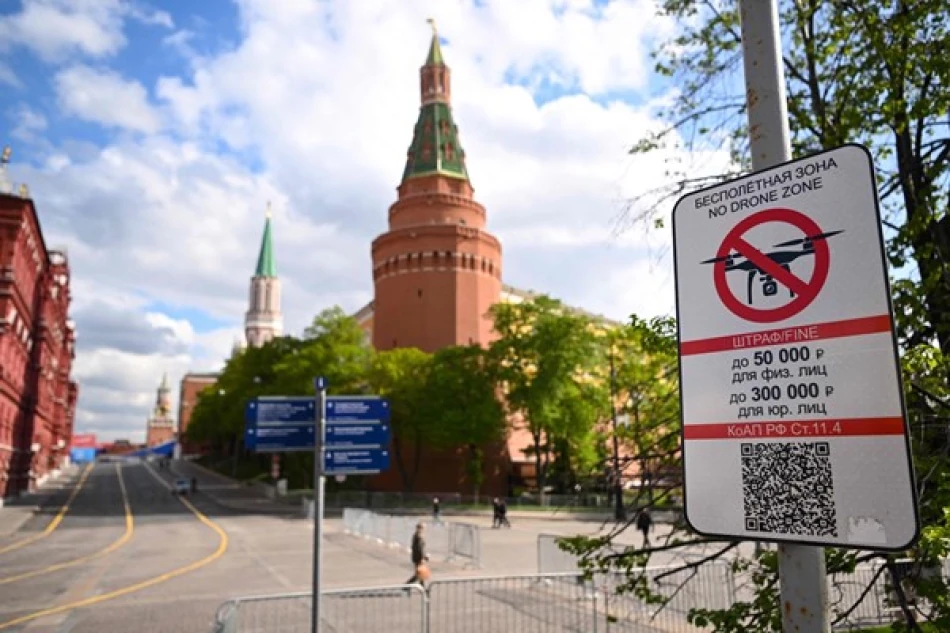
Russian Defense Thwarts Drone Attack: A Crucial Counter to Emerging Aerial Threats
Russia Claims Downing 93 Ukrainian Drones in Major Overnight Defense Operation
Russian air defense systems intercepted and destroyed 93 Ukrainian drones during a single night operation, marking one of the largest reported drone engagements in the ongoing conflict. The widespread nature of the attack, spanning multiple regions including areas near Moscow, signals an escalation in Ukraine's deep-strike capabilities and Russia's defensive response.
Geographic Spread Reveals Strategic Targeting
According to Russia's Defense Ministry statement on Sunday, the drone intercepts occurred across nine regions, with the heaviest concentration in border areas. Bryansk province, which borders Ukraine directly, saw 38 drone intercepts—the highest single-region total. Moscow province recorded 19 intercepts, including 16 drones specifically targeting the capital city itself.
The remaining intercepts were distributed across Kaluga (11), Tula (8), Oryol (5), Nizhny Novgorod (5), with smaller numbers over Kursk (2), Belgorod (1), and Ryazan (1). Three additional drones were reportedly destroyed over Black Sea waters.
Moscow Remains Primary Target
The fact that 16 drones were specifically directed toward Moscow underscores Ukraine's continued efforts to bring the conflict to Russia's political and economic center. Previous drone attacks on Moscow have targeted government buildings, airports, and symbolic locations, aiming to demonstrate that Russian territory is not immune from the war's consequences.
Escalating Drone Warfare Tactics
This reported engagement represents a significant escalation in the scale of drone operations. Earlier in the conflict, Ukrainian drone attacks typically involved smaller numbers—often single digits or low double digits. The jump to 93 drones in one night suggests either improved production capabilities, stockpiling for major operations, or coordination with international suppliers.
Modern warfare increasingly relies on drone swarms to overwhelm air defense systems. By launching large numbers simultaneously across multiple vectors, attackers can exploit gaps in coverage and exhaust interceptor missiles, potentially allowing some drones to reach their targets.
Air Defense Under Pressure
Russia's claim of a 100% intercept rate, if accurate, demonstrates the effectiveness of its layered air defense network around critical infrastructure. However, the sheer volume of incoming threats suggests these systems are operating at capacity limits.
The geographic distribution also reveals potential vulnerabilities. While border regions like Bryansk naturally face higher threat levels due to proximity, the spread to interior regions like Nizhny Novgorod—over 400 kilometers from Ukraine—indicates either longer-range drone capabilities or launch points from within Russian territory.
Strategic Implications for the Conflict
Large-scale drone operations serve multiple strategic purposes beyond immediate tactical damage. They force Russia to maintain extensive air defense coverage across vast territories, diverting resources from frontline operations. Additionally, attacks near Moscow carry psychological impact, potentially affecting public support and political calculations.
For Ukraine, demonstrating the ability to conduct complex, multi-region operations showcases military sophistication to international partners and domestic audiences. However, such operations also risk escalatory responses and may influence Russian strategic decision-making regarding target selection and intensity of retaliatory strikes.
Economic and Military Resource Allocation
Intercepting 93 drones likely consumed significant quantities of surface-to-air missiles, electronic warfare resources, and fighter aircraft fuel. Modern interceptor missiles can cost tens of thousands to hundreds of thousands of dollars each, making mass drone attacks economically favorable for the attacking side when using relatively inexpensive unmanned systems.
This cost asymmetry forces defending nations to develop more efficient counter-drone technologies, including directed energy weapons, electronic jamming systems, and automated close-in weapons systems designed specifically for drone threats.
 Layla Al Mansoori
Layla Al Mansoori







